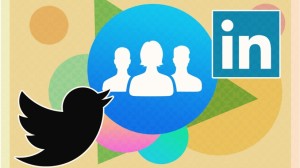Harnessing the Swiftie Effect: Elevate Your Brand Storytelling
As of December 2023, Taylor Swift’s Eras Tour is reported to be the highest-grossing tour ever and is the first to crack $1 billion, with an estimated $1.04 billion in total ticket gross. One of the myriad reasons Taylor Swift is so successful is her ability to touch people with story. Her writing is vulnerable, honest, and universal in its storytelling. Brands can learn from Taylor by learning how to weave storytelling into their marketing. Here are six communications lessons that businesses can learn from Taylor Swift’s songwriting and apply to their marketing strategies to enhance efficacy.

1. Authenticity Connects
Swift’s songwriting resonates because it comes from a place of genuine emotion and experience. Her willingness to share personal stories, whether they are of heartbreak, joy, or self-discovery, invites her audience to connect on a deeper level. Business Lesson: Brands should strive for authenticity in their communications. Share your brand’s journey, the challenges you’ve overcome, and what you stand for. Authentic storytelling can forge a stronger bond with your audience.
2. Know Your Audience
Swift has an uncanny ability to speak directly to the hearts of her listeners. Each song is a communications masterpiece. She understands her audience’s hopes, fears, and dreams. This deep understanding enables her to write songs that feel personal to millions. Business Lesson: Thoroughly understanding your target audience is crucial. Conduct market research to know their needs, wants, and pain points. Tailored messaging that resonates with your audience’s experiences will likely be more effective.
3. Evolve With Your Audience
Over the years, Swift has transitioned across several music genres, from country to pop to indie folk, demonstrating her versatility and willingness to grow with her audience. Business Lesson: The market is constantly changing, and so are your customers’ needs and preferences. Brands must be adaptable, willing to listen to their audience, and evolve their offerings and messaging to stay relevant.
4. Engage Through Multiple Channels
Swift uses a variety of platforms to engage with her fans, from social media to surprise album drops, and interactive music videos. She creates a multi-channel experience that keeps fans engaged and invested in her storytelling. Business Lesson: Utilize multiple platforms to engage with your audience. Whether it’s through social media, blogs, email newsletters, or events, diversifying your communication channels can help reach your audience wherever they are.
5. Create a Community
Swift has mastered the art of community building, creating a loyal fan base that feels connected not just to her, but to each other. Business Lesson: Creating a sense of community around your brand can turn customers into brand advocates. Encourage user-generated content, create online forums or groups, and engage in conversations that build a shared sense of identity and belonging.
6. Consistency Is Key
While Swift has evolved musically, her core narrative of storytelling through song has remained constant. This consistency helps fans know what to expect from her, even as she experiments with new sounds and genres. Business Lesson: Consistency in brand messaging and values reassures customers and builds trust over time. While it’s important to adapt and innovate, maintaining a consistent core message is crucial.
Final Thoughts for Brands
Taylor Swift’s unparalleled success as a songwriter and performer offers valuable communications lessons for businesses in any industry. By embracing authenticity, understanding and evolving with your audience, leveraging multiple communication channels, fostering community, and maintaining consistency, brands can create more meaningful, lasting connections with their customers. Mindfull Marketing + PR believes in the power of storytelling, and we see Swift’s approach as a beacon for brands aiming to engage their audience in a profound and impactful way. We take these lessons to heart and craft marketing strategies that resonate, inspire, and endure for our clients.











